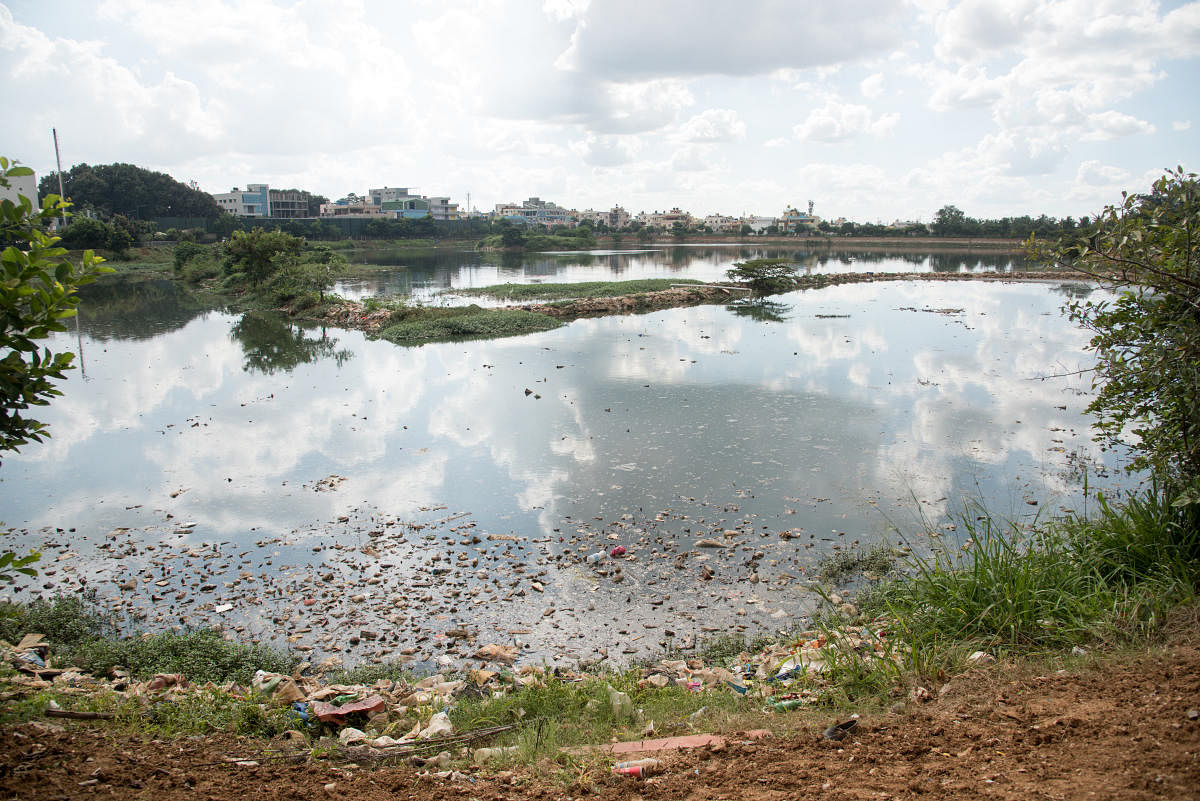
Nothing like lake rejuvenation to arrest Bengaluru’s water woes, hyper-boost its sliding ecological footprint and get its fading green aesthetics an urgent image makeover. If this is a collective view shared by scientists, activists and the State for years, why do words and action remain disconnected as ever?
Despite its headline-grabbing froth and fire on water, the city’s flagship pollution avatar, the Bellandur Lake continues to receive the bulk of Bengaluru’s untreated sewage. Half-hearted restoration efforts have failed to show results. The National Green Tribunal (NGT) has pulled up the State yet again for good reason.
Execution gaps
In close proximity to Bellandur, the Agara and Varthur lakes are also on the NGT’s radar. A committee set up to oversee the rejuvenation of these lakes has found huge gaps in several critical areas: Inflow of treated water into the sewage network, lack of fencing, non-deployment of marshals, funds allocation and more.
There are no signs of CCTVs, watch towers or robust measures to stop encroachments. Illegally built roads on the lake beds to aid trucks that dump construction debris are still in place. The Tribunal has also found no sign of buffer zone maintenance around the lakes and the rajakaluves.
Non-compliance
Stung by this blatant non-compliance of its earlier directions, the NGT’s Principal Bench has threatened coercive action and even civil imprisonment against the officials concerned. The message to the topbrass of the BBMP, BWSSB, BDA and the KSPCB is loud and clear: Act or face punishment.
Beyond the Bellandur-Varthur area, lake restoration is not in great shape either. As Ramprasad from Friends of Lakes notes, “Lake rejuvenation today has become a cosmetic exercise, a total farce. Being very superficial, the process does not go beyond beautification.”
No water inflow
There is no water inflow into many restored lakes, he points out. Whatever trickle that eventually gets into these water bodies is mixed with sewage. “None of the 75 restored lakes have got into the A, B or C grade. They are all either D or E.”
While Grade A lakes have water certified fit even for drinking, the Grade B ones are good for bathing. Grade C lake water has to be disinfected to make it potable. Class D lakes are considered fit only for breeding fish and wildlife propagation. Class E water bodies are so poor that consumption cannot go beyond irrigation and industrial cooling.
Beyond beautification
To be sustainable, restoration and rejuvenation should get beyond beautiful walkways, benches and plants. “The Detailed Project Reports (DPRs) are prepared without much thought for good water, proper inlets and outlets and desilting. For catchment studies, the reports allot only 10 pages, and the bulk talks only about beautification,” says Ramprasad.
Lakes, restored or otherwise, cannot survive if they are not treated as water reservoirs. “There has to be a Sewage Treatment Plant (STP) for every lake because the BWSSB cannot guarantee that the inflow does not contain sewage.”
A failure to look at lakes as water reservoirs has shrunk the water-holding capacity of most to 4-5 ft. De-silting is often restricted to a depth of 1.5m, implying the focus is on cosmetics than sustainability. To make it worse, in many lakes, the inlet drain is positioned below the lake bed, defeating the purpose.
Stone-pitching
The obsession with aesthetics and only the outwardly embellishments has obviously left no funds for steps to sustain the lake’s life. “Stone-pitching, for instance, is not required everywhere. It is only needed on the bund side near the outlet. But so much of money is spent on this,” says environmentalist and a researcher in water quality, Akshaya Kumar Devendra.
Cosmetic makeovers have their limits. He explains, “Too much of artificial material will not attract birds. Artificial lawns will require a lot of water.”
One-size fits-all model
Every lake is different, and copy-pasting a one-size fits-all model will just not work, reminds Devendra. Not all lakes require expensive STPs.
“There are natural processes available to purify the water at very low costs. But the stake-holders are not interested in such low-cost initiatives.”
The natural, biological sewage treatment system uses the gradient, employing a five to 10 stage filtration process within the lake near the inlet.
“The sewage is allowed to flow naturally over boulders to jelly to sand to bricks so that the pollutants are filtered,” he points out.
Often, the restoration processes in vogue thrive on diverting sewage from a smaller to a bigger lake. Devendra terms this a flawed approach, as the smaller lakes act as ‘kidneys of the Earth.’
His advice: If 60-70% of the sewage can be removed upstream, the large lakes downstream will not remain hopelessly polluted.
To illustrate this, there is no better place than the highly toxic Varthur lake. Notes M A Khan, principal of the K K High School that lies close to the water body:
“The lake will not show any improvement unless the Bellandur lake upstream is rejuvenated. This place emanates a lot of foul smell, almost like a clogged drain.”
Collaborative approach
Official apathy, as the NGT observation clearly indicates, has let these lakes reach a point of no return. But a truly collaborative approach between multiple stakeholders including the parastatal agencies and the local community could make a difference.
Take the case of the Puttenahalli lake. This water body, rejuvenated nine years ago through the active participation of the BBMP and the Puttenahalli Neighbourhood Lake Improvement Trust (PNLIT) has largely remained unaffected for a good reason: “We have been working very closely with the Palike, and they have been absolutely supportive,” notes the Trust’s Chairperson, Usha Rajagopalan.
In recent months, the lake has faced the challenge of sewage inflow. But the Trust attributes this not to the civic agencies. The BWSSB is unable to work on an underground drainage leading to the lake due to the presence of five to six houses built right above it. The ball is now in the court of the Slumb Board and the Revenue Department.